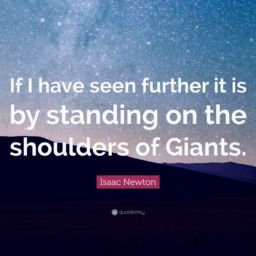“OK Boomer”: If there’s one thing we hope for in the workplace for the new year, it’s that we take the time to be more considerate of one another and leave behind the generational, race, or whatever-your-bias-is-shaming.
One of the more prevalent forms of bullying that persists is “millennial-shaming” where one generation – the “Millenials” are subjected to incessant generational shaming mostly by the “Boomer” generation. Millennial-shaming has been going on for a few years now. So, as you can imagine, the after-effects of workplace bullying are staggering.
I’m sure you’ve heard the term “OK Boomer”, which originated around 2009 and has resurfaced in an attempt to have a lighthearted to the incessant bullying. The term Baby Boomer actually defines approximately 75 million people born in the US between 1946–1964. In contrast, approximately 72.1 million Gen Y, or “Millennials” were born in the US between 1980 and 1994 (between 26-40 years old).
The History of Workplace Bullying
Don’t worry, I’m not going to make you feel bad about bullying others. Instead, in this blog, I want to give some examples of the differences between aggression and bullying and the risks to health and safety as we look at this social issue from both perspectives: the bully and the millennial.
Over the last hundred years, the cycle of generational bullying has continued. The Silent Generation – born during the Great Depression -the Silent Generation were criticized for being too agreeable and too silent by their predecessor, the GI Generation (aka “The Greatest Generation”). The Baby Boomers were deemed as too free-spirited and too outspoken about social causes by the Silent Generation. Generation X were called slackers for their carpe diem attitude by their predecessors.
And so here we are. The cycle continues.
The Cycle Continues: What Generational Bullying Teaches Us
So you met someone who is lazy or acted entitled that is younger. Have you not known one other person in your life who is a non-millennial that acts the same?
Here’s what else we’re seeing in the workplace and its implications:
1-Generational bullying teaches others that it’s ok to treat other people badly and judge them for no other reason than their age. In some cases, this is a self-fulfilling prophecy for boomers who are afraid that someone younger and smarter and faster and cheaper is going to take their job?.
2- Generational bullying teaches others that respect is a one-way street that is given not earned. So even one who isn’t faster, wiser, smarter, wants automatic respect because of one’s age while they disrespect another because of theirs.
3-Generational bullying teaches others that a worker is disposable because of his or her age. The rising cost of education, inflation that affects their buying power, and the lower wages and dispensable nature in which they are treated as an employee has stacked the odds against them.
4- Generational bullying teaches others that, if a person doesn’t like the hand he or she is dealt, blame someone else who is differently ables instead of actively working to make it better or be the change that you want to see.
5- Generational bullying teaches others that it’s ok to not take the time to understand one another.
How does this differ from you? Are you contributing to the problem, a victim, or a bystander? If you think about it, we were all young once. We all had ambitions that were tied to our age. “When I grow up, I will…” We were raised that, when we got older, we’d be deserving of a higher title, a promotion, or pay raise because of our age.
Just The Facts: The Workplace Data Doesn’t Lie
Generational bullying in the workplace can lead to some serious effects. If it goes unaddressed, it can have a traumatic and deeply impacting effect on the company culture.
Did you know that:
- 19% of Americans are bullied at work
- 60.3 million American workers are affected by bullying
- 65% of people bullied at work are women
- 70% of perpetrators of bullying at work are men
- 65% of bullied employees lose their jobs
- 25% of workplace bullying cases report Hispanics as the most frequent victim
- 21% of workplace bullying cases report African Americans as the most frequent victim
- 5% of bullying victims in the workplace report contemplation of suicide
- 72% of workers believed bullying incidents were handled inadequately
Take a minute to let that soak in… yikes!
How to Address Workplace Bullying
- Whether you’re a witness to workplace bullying or a victim of it, there are quite a few things you can do to document and report your experiences.
- For starters, document in writing each occurrence: when it happened, what was said/done, save any and any other details and documentation you have.
- Next, report it to your supervisor or to HR as soon as possible. It’s important that you report It in a timely manner so that it can be addressed quickly.
- If you are comfortable and are able to do so calmly, confront the bully. Tell them how the incident made you feel and ask them to stop. Try to have a witness available for the discussion, as well.
- Lastly, if you feel the situation merits legal help, seek guidance from a lawyer who is experienced in workplace issues.
What’s Next?
It’s time for some straight talk — from one non-millennial to one another.
I am a very big believer that we teach people how to treat ourselves through our own actions. That’s why I’m embarrassed about what we have become and the issue that we’re broadly refusing to accept and change when it workplace bullying amongst our diversity and inclusion initiatives. Have we really squandered decades of opportunities to rise up and now have contributed to a wreck of a world where we are as divided as ever? We are better than this. Together.
Open hearts and minds prevail in the quest to build a more inclusive workplace. When you’re ready to take your diversity and inclusion concepts from paper to progress, give us a call. We may not have the beat on any good millennial dad jobs, but we follow a few hilarious TikTok channels.






